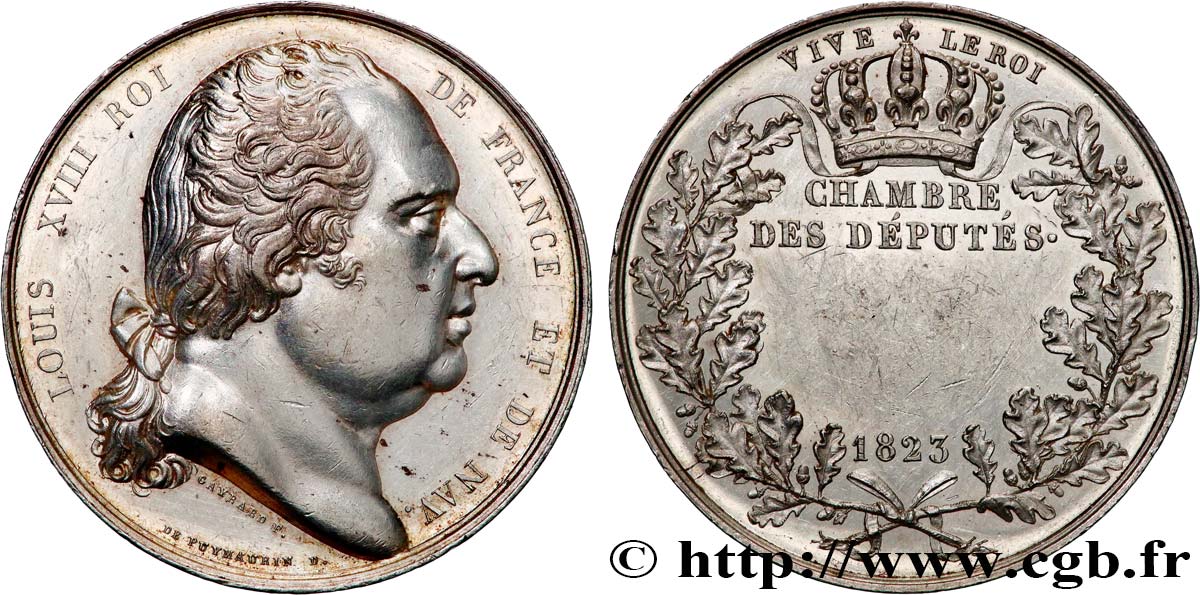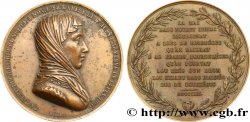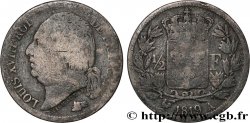Live auction - fme_705403 - LOUIS XVIII Médaille parlementaire
You must signin and be an approved bidder to bid, LOGIN TO BID. Accounts are subject to approval and the approval process takes place within 48 hours. Do not wait until the day a sale closes to register. Clicking on "BID" constitutes acceptance of the terms of use of cgb.fr private live auctions.
Bids must be placed in whole Euro amounts only. The sale will start closing at the time stated on the item description; any bids received at the site after the closing time will not be executed. Transmission times may vary and bids could be rejected if you wait until the last second. For further information check the Live auction FAQ
All winning bids are subject to a 18% buyer’s fee.
All winning bids are subject to a 18% buyer’s fee.
| Estimate : | 250 € |
| Price : | 120 € |
| Maximum bid : | 120 € |
| End of the sale : | 25 January 2022 19:15:53 |
| bidders : | 1 bidder |
Type : Médaille parlementaire
Date: 1823
Metal : silver
Diameter : 40,5 mm
Orientation dies : 12 h.
Engraver GAYRARD Raymond (1777-1858) / DE PUYMAURIN Jean-Pierre (1757-1841)
Weight : 40,60 g.
Edge : lisse
Puncheon : sans poinçon
Coments on the condition:
Exemplaire présentant quelques frottements dans les champs. Présence de fines rayures dans les champs. Légère usure
Obverse
Obverse legend : LOUIS XVIII ROI - DE FRANCE ET DE NAV..
Obverse description : Buste à droite de Louis XVIII; signé : GAYRARD F. et DE PUYMAURIN D..
Reverse
Reverse legend : VIVE LE ROI // CHAMBRE / DES DÉPUTÉS / 1823.
Reverse description : Légende en deux lignes sous une couronne, dans une couronne de chêne.
Commentary
Exemplaire non décerné.
La Chambre des députés des départements (selon le titre exact de cette assemblée dans la charte de 1814), ou plus usuellement Chambre des députés, était une assemblée législative française instituée par la charte de 1814 et élue au suffrage censitaire.
Elle est constituée le 4 juin 1814 par les membres du Corps législatif de l’Empire, et compte alors 237 membres. Le 20 mars 1815, au début des Cent-Jours, elle est dissoute et remplacée en juin par une Chambre des représentants.
Après le retour de Louis XVIII, les élections des 14 et 22 août donnent aux ultra-royalistes ou ultras une majorité de 350 sièges sur 400. Le roi parle de « Chambre introuvable » ; gêné par son radicalisme réactionnaire, il la dissout le 5 septembre 1816, et le 25 octobre, les élections sont favorables aux « constitutionnels », c’est-à-dire aux modérés.
Les députés sont d’abord élus pour cinq ans et la Chambre renouvelée par cinquièmes. En application de la loi du 9 juin 1824, leur mandat est de sept ans et le renouvellement est intégral. Les élections, en 1827 et 1830, seront cependant provoquées par des dissolutions..
La Chambre des députés des départements (selon le titre exact de cette assemblée dans la charte de 1814), ou plus usuellement Chambre des députés, était une assemblée législative française instituée par la charte de 1814 et élue au suffrage censitaire.
Elle est constituée le 4 juin 1814 par les membres du Corps législatif de l’Empire, et compte alors 237 membres. Le 20 mars 1815, au début des Cent-Jours, elle est dissoute et remplacée en juin par une Chambre des représentants.
Après le retour de Louis XVIII, les élections des 14 et 22 août donnent aux ultra-royalistes ou ultras une majorité de 350 sièges sur 400. Le roi parle de « Chambre introuvable » ; gêné par son radicalisme réactionnaire, il la dissout le 5 septembre 1816, et le 25 octobre, les élections sont favorables aux « constitutionnels », c’est-à-dire aux modérés.
Les députés sont d’abord élus pour cinq ans et la Chambre renouvelée par cinquièmes. En application de la loi du 9 juin 1824, leur mandat est de sept ans et le renouvellement est intégral. Les élections, en 1827 et 1830, seront cependant provoquées par des dissolutions..








 Report a mistake
Report a mistake Print the page
Print the page Share my selection
Share my selection Ask a question
Ask a question Consign / sell
Consign / sell
 Full data
Full data



